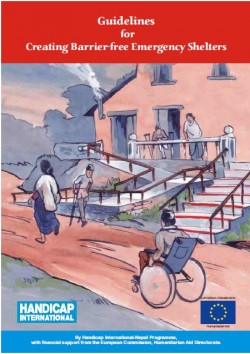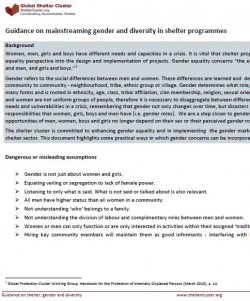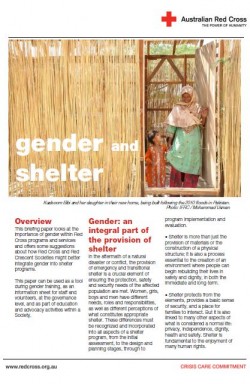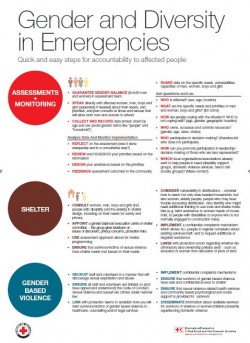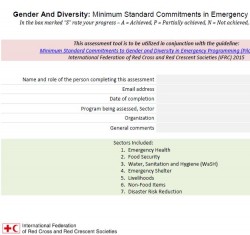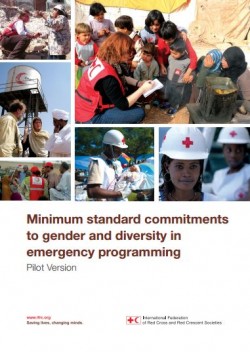Purpose
These guidelines provide information and examples to support the design and construction of barrier-free emergency shelters that may be used by all people within a community following a natural disaster, such as a flood or landslide.
Overview
Barrier-free environments need to be designed for all people, including those with visual, hearing, speech, mental and intellectual impairments. The document provides general information to assist with the design of barrier-free environments that will accommodate people with vision impairment, hearing and/or speech impairment, intellectual or mental health impairments; limited mobility, and those who have difficulty using their arms and hands.
The document also provides guidelines on: space considerations; evacuation routes; ramps; steps, handrails, verandas and doorways; toilets; cooking; water pumps; emergency shelter in flood-prone area; and emergency shelter in hill or mountain areas for all people within a community after a natural disaster.
Usage: Guidance for project implementation
Audiences: Technical staff
Reference: Handicap International (February 2009). Guidelines for Creating Barrier-Free Emergency Shelters. European Commission Directorate General for Humanitarian Aid (ECHO). Pp. 1-17. Available from: http://reliefweb.int/sites/reliefweb.int/files/resources/Emergencies_Creating_Barrier_Free_Emergency_Shelters.pdf [Accessed: 18th July 2016].
![]()


